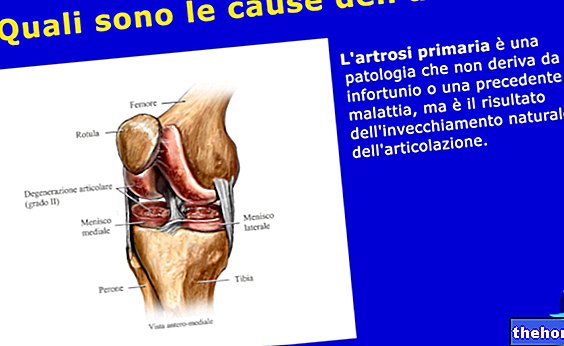The myocardium is an organ whose metabolism is essentially aerobic, that is, based on oxidative reactions that require a constant and sufficient supply of oxygen; by hypoxia or anoxia we mean a lack of oxygen supply by the coronary arteries, a condition extremely poorly tolerated by the heart muscle.
In the normal subject, at rest, the venous blood refluxing from the myocardium is very poor in oxygen, as a consequence of its extraction from the arterial blood. In fact, taking venous blood from the coronary sinus the saturation of O2 is approximately 20%, given this which indicates an almost maximal resting extraction.
The factors that specifically determine the consumption of O2 by the myocardium are heart rate, contractility, cardiac preload and afterload, the mechanical characteristics, that is, of cardiac activity.
In the normal subject, the supply of oxygen from the coronary circulation is regulated in such a way that during even a maximal effort, the myocardial oxygen demand is always fully satisfied. The normal myocardium, supplied by healthy coronary arteries, is therefore never hypoxic.
Coronary heart disease is defined by the presence of atheromatous lesions in the coronary arteries (coronary atherosclerosis), lesions that restrict coronary circulation on which the normal functioning of the heart muscle depends; cardiac impairment will depend on the severity and extent of the coronary heart disease.
The lesions are generally localized in the proximal tract of the arteries (but they can also be diffuse and affect the more peripheral branches) and determine a degree of obstruction, or stenosis, more or less severe.
Coronary stenosis involves a reduction in blood flow, therefore a lower supply of O2 to the myocardium located downstream of the stenosis itself, which therefore becomes hypoxic; as a compensation mechanism for this situation, a dilation of the coronary arterioles is determined, in order to maintain an adequate blood flow as possible.
If coronary stenosis is moderate, the downstream myocardium will still be able to receive a sufficient supply of O2 at rest; when the stenosis is severe (obstruction of the arterial lumen greater than 80%), a situation of chronic hypoxia or ischemia will be created, despite the maximal vasodilation of the coronary arterioles.
If the myocardial demand for O2 increases, eg. during physical exertion, the stenotic lesions cause an obstacle to the supply of the O2 itself, thus determining a situation of ischemia. The ischemia in turn involves the appearance of signs of myocardial suffering, namely: metabolic abnormalities (production of lactic acid), depression of myocardial function (heart failure), electrocardiographic abnormalities, anginal symptoms.
It should be remembered that, in addition to the coronary narrowing caused by atherosclerosis, a situation of myocardial ischemia can be secondary to the so-called coronary spasm. By spasm we mean a prolonged, intense and localized narrowing of a tract of the coronary artery; it can occur both on arteries coronary arteries, both on atherosclerotic coronary arteries.
As regards the clinical pictures of ischemic heart disease, different situations can be distinguished, which can be defined as the acute phase and the chronic phase. Sudden death, generally due to severe ventricular arrhythmias or A-V blocks, angina pectoris, pre-infarct angina and myocardial infarction belong to the first group. Chronic ischemic heart disease is represented by the chronic and stabilized clinical picture referable to atherosclerotic coronary artery disease.
The main predisposing factors to coronary heart disease are: arterial hypertension, cigarette smoking, diabetes mellitus, primary and secondary hyperlipoproteinemia, excess weight, sedentarism, hyperuricemia, hypothyroidism, stress.
Ischemic heart disease, which affects men more frequently than women, is to be considered one of the most common causes of death in western industrialized countries, considerably exceeding the mortality resulting from cancer. Out of 100,000 inhabitants, from 100 to 500 deaths are to be ascribed to this pathology.
It should be remembered that in recent years there has been a gradual but significant reduction in cardiovascular mortality, probably in relation to the measures implemented to correct the main risk factors listed above; these measures constitute the so-called primary prevention of coronary heart disease.
Therapy can be medical (anti-ischemic drugs), surgical (myocardial revascularization, especially with aorto-coronary bypass) and rehabilitation. The rehabilitation of the heart patient in fact represents the point of contact between ischemic disease and physical activity, and consists, as the WHO specifies, in a "series of measures to be implemented in order to bring the patient back to the best physical, mental and social possible, compatibly with its name ».
As far as the rehabilitation of the heart patient is concerned, it is necessary to consider different stages and precisely:
- acute phase;
- convalescence phase;
- postconvalescence and stabilization phase.
The first two are normally carried out in the hospital and range from early mobilization which includes exercises of respiratory gymnastics, limb mobilization up to the resumption of standing, and walking first on the flat and then down the stairs. All these phases are constantly under control with monitoring.
When, after about 6 weeks, the subject enters the postconvalescence and stabilization phase, if there are no contraindications, physical activity will be gradually increased with work on the cycle ergometer or on a transporter ergometer or by free walking, again periodically resorting to specialist control with recording of electrocardiogram during the planned activity. Initially the subject will pedal for about 8 minutes twice a day at 50 rides per minute at 200 kgm / min (33 W) of load to progressively reach 15 min after a month with 60 rides per minute and with a load of 450 kgm / min (75 W).
The maintenance phase after about another two months will involve a daily work of 15 min at 60 rides per minute and with a load of 600 kgm / min (100 W).
If the subject prefers to walk or does not have a cycle ergometer available, he will start by walking for 12 minutes and covering in this time about 800 m on the flat. After a month, he will go on to walk 2 km in 20 min, to arrive, after another two months, at a maintenance program which consists of walking for 30 min covering 3 km.
Subsequently, if there are no medical contraindications based on periodic checks, it will be possible to resume sports activities that do not involve an expenditure exceeding 7-8 MET.
See also: Ischemic heart disease
Curated by: Lorenzo Boscariol
Other articles on "Ischemic Heart Disease - Causes and Benefits of" Physical Activity "
- electrocardiographic abnormalities 3
- cardiovascular system
- athlete's heart
- cardiological examinations
- cardiovascular pathologies
- cardiovascular pathologies 2
- cardiovascular pathologies 3
- cardiovascular pathologies 4
- electrocardiographic abnormalities
- electrocardiographic abnormalities 2
- screening of the elderly
- competitive fitness
- cardiovascular sports commitment
- cardiovascular commitment sport 2 and BIBLIOGRAPHY




























